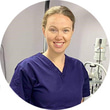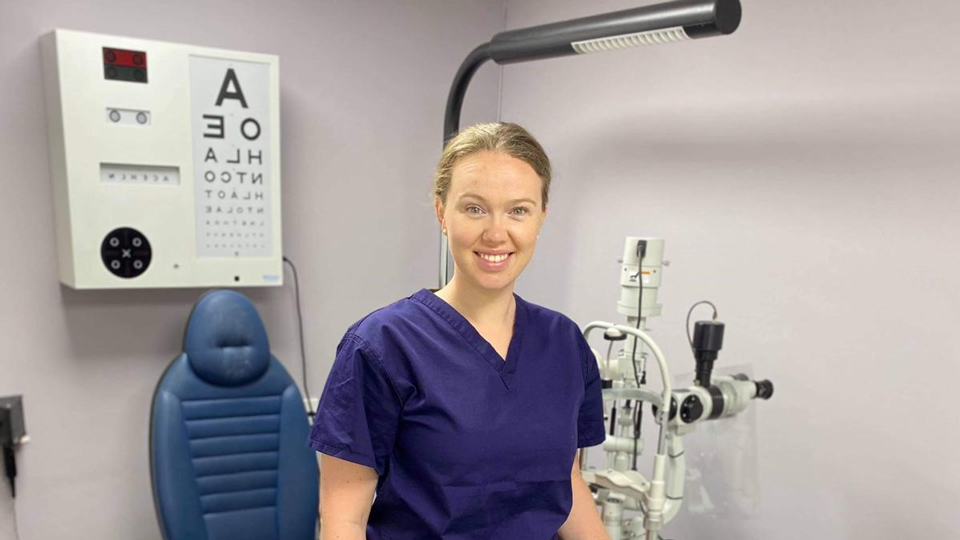- OT
- Life in practice
- Practitioner stories
- “I made sure to lead from the front”
Perspectives
“I made sure to lead from the front”
In her latest update for OT , optometrist Faye McDearmid, of Campbell & McDearmid Optometrists in Redcar, reveals what she has learned while fitting contact lenses during lockdown


Faye McDearmid
09 February 2021
Lockdown is trying, but equally it has provided a learning opportunity. Everyone has learned to adapt, and I’ve realised just how resilient we can be.
I’ve also realised that how we do our work may have changed, but the necessity of discovering our patients’ needs and recommending appropriate solutions for them remains the same. This has helped keep me grounded.
In the initial phase of lockdown in March, my priority – like many other ECPs – was to take care of my colleagues, healthcare workers, and emergency cases for patients. We prioritised fitting contact lenses for essential purposes, such as enabling medical workers to more easily wear personal protective equipment (PPE). I also prioritised reaching out to any of my patients who had only just been fitted with contact lenses and got in touch with all of them to set up remote consultations. From June, we were able to start to reach out to more patients, inviting them to come in if they had any questions or challenges.
Perhaps surprisingly, there were several patients eager to come in to discuss contact lenses and alternative options to glasses while wearing PPE. We were able to offer and complete a variety of new fits, from fitting multifocals for presbyopes, to new lenses for children struggling with wearing masks and glasses at school, to toric lenses for those with astigmatism. Understandably it was those with the highest prescriptions that often needed the most support, where taking glasses off temporarily if they fog up isn’t an option.
When I started inviting more patients into practice for contact lens fittings, I made sure to lead from the front, showing my team how they could safely get back in the consulting room
What I have learned
I’ve been able to do a range of new contact lens fits, and teaching application and removal has, oddly enough, become easier. Patient visits aren’t taking nearly as long, because we send content to them in advance of coming in.
By now, most of us will have done a remote consultation for patients. But what about contact lens fitting? I’m glad to say it was easier than I thought. I’ve had a few multifocal fits that I thought would be difficult to manage remotely, but it was completely fine. After patients start their trial, I do a follow up, they score their vision on a scale to 10 and, if they need an enhancement, I send it through the post. This has been just as successful for me as face-to-face visits were before lockdown, and maybe even more so because it allows patients to test their vision in the real world, rather than based on what line they can read on our chart in practice.

When I started inviting more patients into practice for contact lens fittings, I made sure to lead from the front, showing my team how they could safely get back in the consulting room. Seeing a demonstration from the start made them happy to get on board straight away.
We conducted a risk assessment for every area of practice, including contact lens teaching. This included introducing a Perspex screen for teaching application and removal of contact lenses, hand washing (as always), demonstrating lens application and removal on our own eyes, and sharing patient videos in advance of appointments. By providing all of this, I’ve found patients are generally more relaxed. They know what to expect and they can visibly see the hygiene procedures we have in place. There is always risk, but you manage this with good practice, following risk assessments and keeping up to date with recommendations.
Throughout lockdown, we have provided reassurance the same way we always would for new patients. We communicated in advance what to expect for their appointment. In light of COVID-19, that meant an additional triage form for booking and patients being made aware that they would have their temperature checked on arrival. Safety measures are also visible from the start; patients can see us visibly clean the teach area – for example, to help put them at ease.
I am so grateful for the support I’ve had from others working through this challenging time
For practitioners who haven’t been fitting contact lenses recently or who were furloughed, returning to practice may have been a little intimidating. While I’ve had time to get comfortable with new procedures, I always suggest colleagues who are unsure to speak with other ECPs who have been fitting patients throughout the last few months. Check out industry panels and webinars such as Johnson & Johnson’s session with Professor Phil Morgan on COVID-19 and recommendations for contact lens practitioners.
Rationalise with yourself the safe steps to take and talk to others in the profession about what they do and what works for them. We should be supporting each other, and it can help boost confidence. I work alone a lot of the time in practice as a sole ECP, and I am so grateful for the support I’ve had from others working through this challenging time.
I’ve been lucky to continue to see a lot of patients, and I don’t think any have been surprised to be offered contact lenses. They still expect that we offer them the best vision treatment and full range of solutions available. In that sense, how we support patients is the same as it was before the outbreak of the pandemic. It is about giving patients the best care possible.
Fay’s four lockdown learnings…
- Remote follow-ups for fittings are easier than you might think
“I’ve had a few multifocal fits that I thought would be difficult to manage remotely, but it was completely fine” - Train and encourage your team
“Seeing a demonstration from the start made colleagues happy to get on board straight away” - Provide reassurance
“Patients can see us visibly clean the teach area – for example, to help put them at ease” - Lean on other ECPs
“We should be supporting each other - it can help boost confidence”

Comments (0)
You must be logged in to join the discussion. Log in